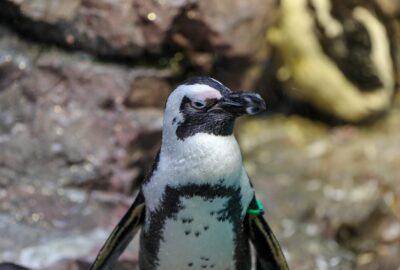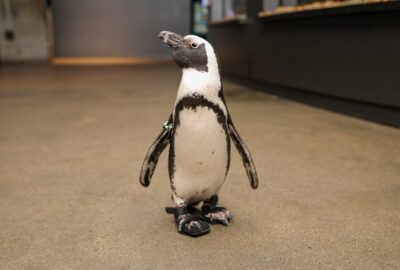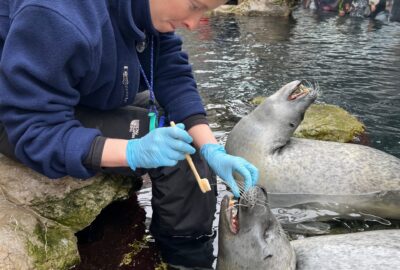Please Note: Our Box Office is currently closed for renovation. Tickets can be purchased onsite in the Simons Theatre lobby today. We recommend purchasing tickets online in advance to guarantee and expedite your entry to the Aquarium.
For Peeko the African Penguin, Acupuncture is Routine Care
Learn how our vet team works to incorporate acupuncture into specialized treatment plans for Peeko and other animals.
By New England Aquarium on Thursday, March 07, 2024

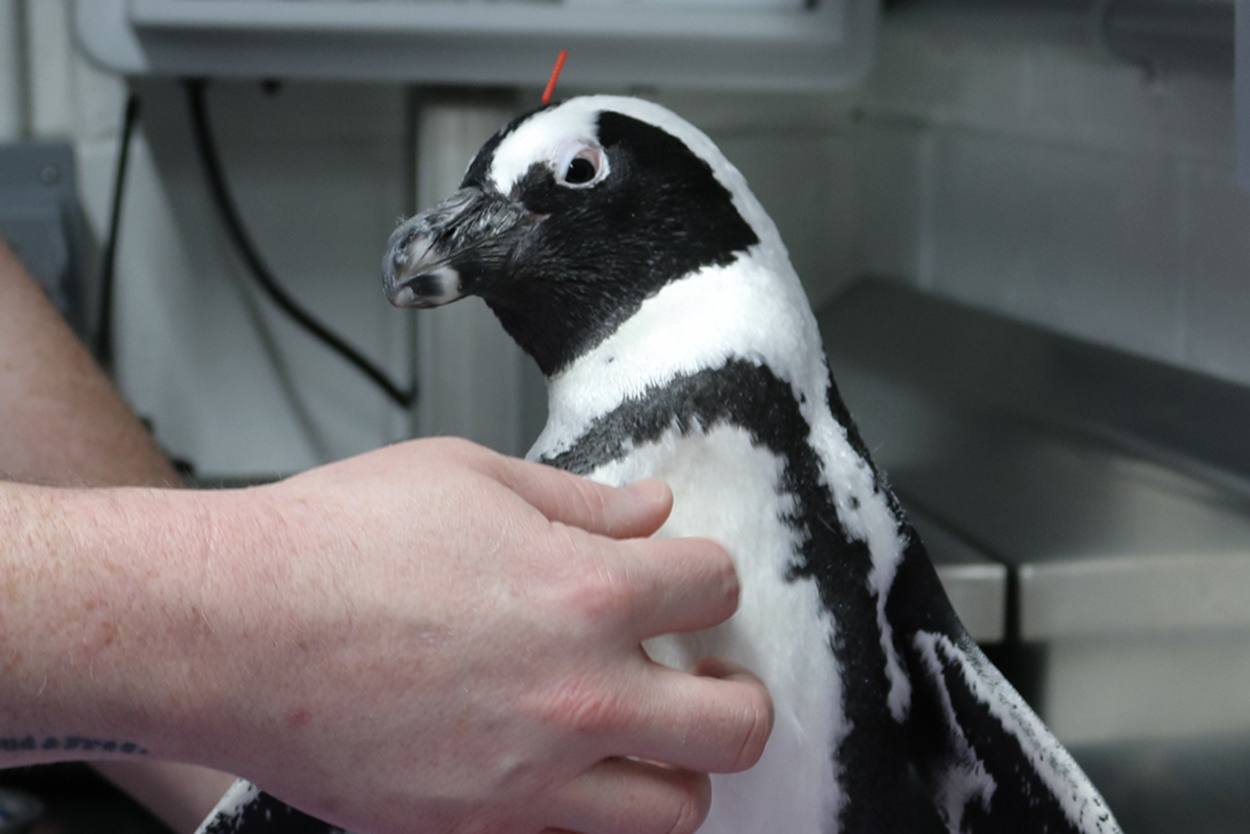
Peeko isn’t the typical acupuncture client—unless it’s at the New England Aquarium and Dr. Claire McManus is on call. McManus is an acupuncturist with 25 years of experience treating human patients and who, for nearly 15 years, has also been volunteering with the Aquarium to treat animals, including sea turtles and penguins like Peeko.
As a fellow of the American Board of Animal Acupuncture, McManus can treat animals in collaboration with veterinarians. Working alongside the Aquarium Director of Animal Health, Dr. Melissa Joblon, McManus delivered Peeko’s most recent acupuncture treatment. Joblon and team have taken an integrated approach, using acupuncture alongside other more “traditional” treatments to help relieve the 30-year-old African penguin’s spine and joint inflammation—a common ailment for geriatric birds.
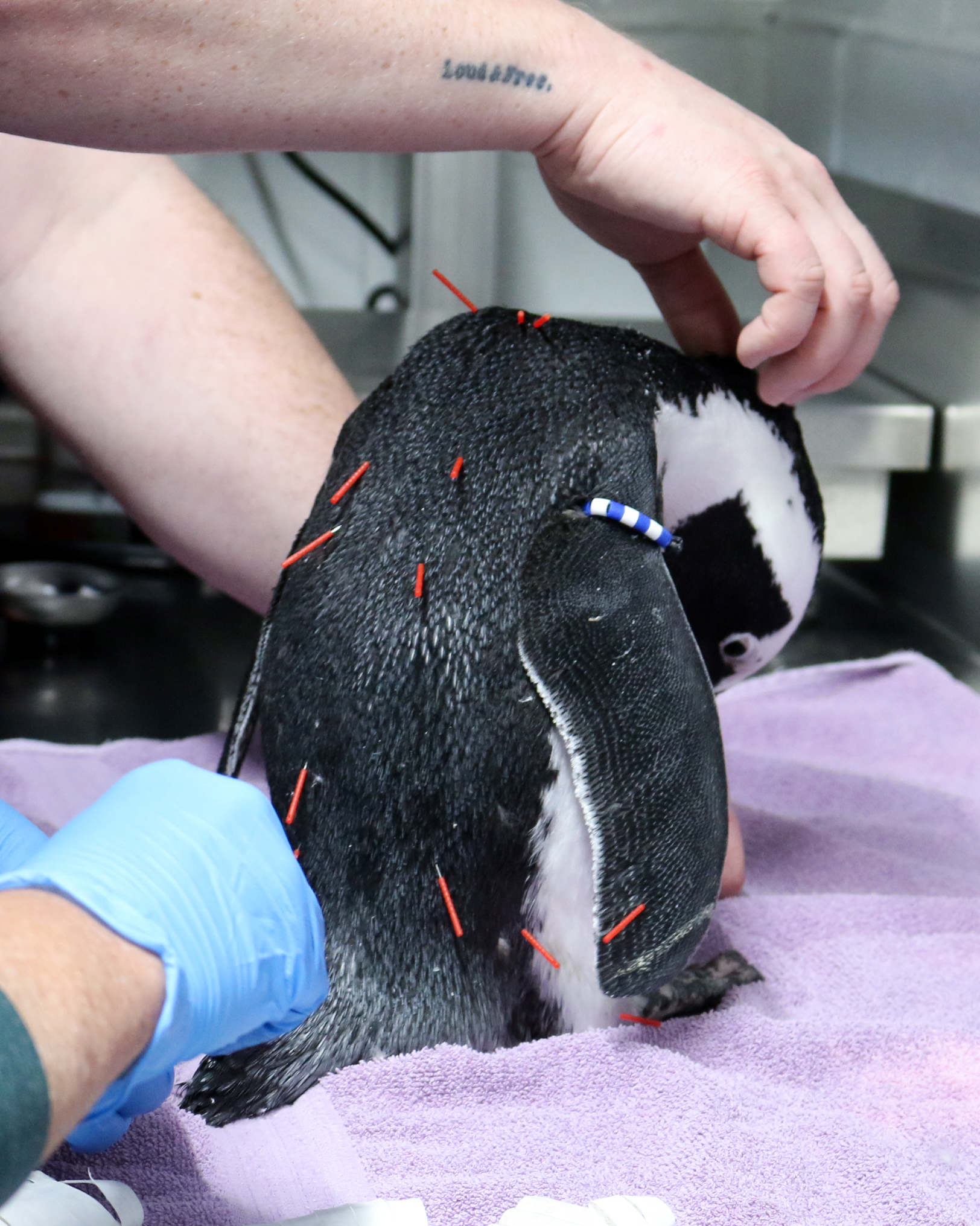
“Similar to humans, weight management is important to manage pain associated with arthritis or spinal disorders in animals,” Joblon explained. “But for African penguins like Peeko, during molting, they can put on twice as much weight, and that’s putting additional stress on their spine and joints.”
During this year’s molt, Peeko exhibited signs of acute spinal inflammation, including an abnormal gait, which alerted both our veterinarians and trainers to the fact she was experiencing discomfort. After her molt was complete, McManus was called in to help relieve some of Peeko’s symptoms and speed up the healing process.
Throughout Peeko’s treatment, which takes around 15 minutes, McManus carefully places about a dozen hair-thin needles across Peeko’s body. “Acupuncture is used in local areas where there’s muscle tightness, so it can increase circulation to the musculature,” said McManus. “It’s used to decrease inflammation, and it’s used to open up fascia, which is our connective tissue.” With needles far from Peeko’s spine—“down to the equivalent of her ankles”—McManus is still targeting the connective tissue in Peeko’s back.
So, how does Peeko respond to her acupuncture treatment? “You can feel her relax in your hands,” says Assistant Curator of Penguins Eric Fox, who assists at Peeko’s sessions. The lead-up to her treatment requires a lot of individualized training with Eric and his team to ensure Peeko is comfortable being held and having a second person in the room.
“We can make it really positive for Peeko,” Fox said. “She loves tactile reinforcement, so she preens the team back while she’s being touched.”
Joblon, too, agreed that benefits appear soon after treatment. “A few days later, she might be more agile, swimming more, and appear more comfortable.”
Peeko isn’t the first penguin to receive acupuncture at the Aquarium. Deco, who passed away this past summer at the age of 41, had also been a patient of Dr. McManus’s.
“Deco loved it,” McManus said. “You can just really tell with penguins when they’re enjoying it. It’s really rewarding to see them doing well and to walk better and swim better.”
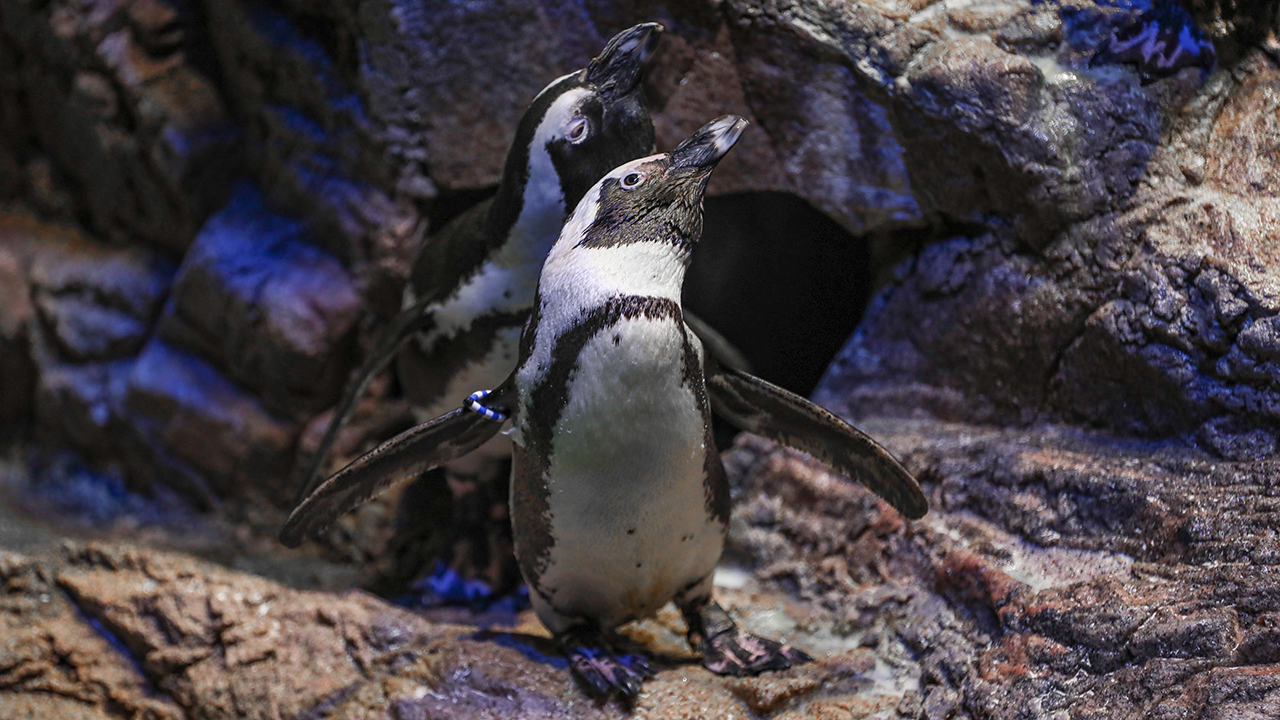
Peeko and Deco are among many different animals McManus has treated with acupuncture. She estimates that about 10% of her acupuncture clients are animals throughout the year. “With any animal, the first thing we think about is: How can we treat the animal in the least stressful way possible?” said McManus. “We’re always really careful to make sure they’re comfortable during the process.”
Currently, McManus and Joblon are collaborating on research focused on acupuncture to treat injured sea turtles in our Sea Turtle Hospital and plan to publish their results. “We hope to share any evidence-based results and effective techniques with other veterinarians and animal care staff for them to use on their own patients,” Joblon said.
“In this field 30 years ago, we were trying to prove that acupuncture works,” said McManus. “Now, we know that it works. We have the experience of thousands of years of historical use of these techniques, as well as a few decades of acupuncture research trials. This generation of veterinarians knows acupuncture is effective and is asking, ‘How can we do the best for these animals?’ So, right now, it’s very exciting to be in the field of acupuncture and a privilege to assist in the care of these endangered species.”
Updated March 2025
In early 2025, Peeko passed away at the age of 31. Over the past several years, Peeko experienced issues related to her spine and joint mobility and received the highest standard of care—including acupuncture and physical therapy. Peeko’s long life, well over the 10-15 year life expectancy of African penguins in the wild, is a testament to the world-class husbandry and medical care our team provides to each animal at the Aquarium.
We were fortunate to care for Peeko for so many years, and she will be very missed.

